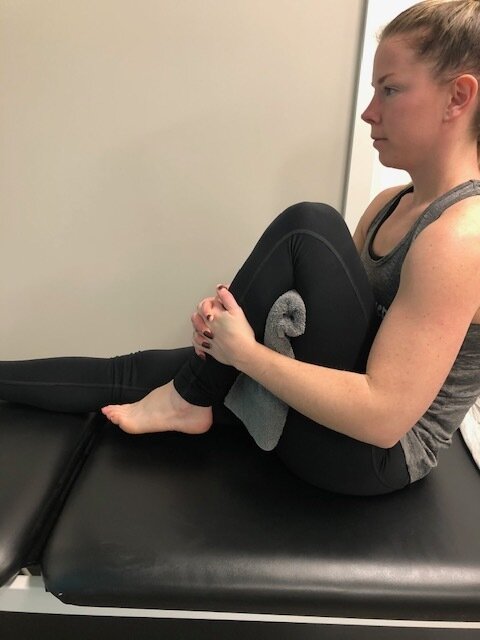How to Manage Knee Osteoarthritis
/Knee osteoarthritis (OA) affects people over the age of 45. It occurs due to degeneration of the cartilage, causing a bone on bone contact between the joint surfaces. Some risk factors for knee OA are high BMI, repetitive knee bending/heavy lifting, history of injury to the joint, family history, and joint hyper-mobility or instability. Most common symptoms include joint swelling, pain and stiffness in the knee. Other possible characteristics are joint crepitus, joint-line tenderness and bony enlargement.
Research has shown that exercise is effective in pain management and improving physical function. Treatment for knee OA involves exercises focusing on maintaining/improving range of motion and strengthening exercises for the muscles supporting the knees. Physical activities such as yoga and tai chi are great for flexibility, balance and strengthening. Cycling and aqua therapy exercises have a lower impact on the knee, and also help with maintaining range of motion and strengthening. The exercises below focus on mobility and strengthening the muscles surrounding the knee.
Isometric quadriceps: lying with your legs extended and a rolled towel underneath your knee. Press the back of your knee down into the towel, lifting your heel slightly off the bed. Hold the contraction for 5 seconds, repeating 2 sets of 10, daily.
Knee flexion with towel: Place a small rolled towel underneath the back of your knee. Bend your knee, applying some overpressure with your hands placed around your shin, within pain-free. Hold for 10 seconds, repeating 10x daily.
Hamstring curl: standing close to a wall or table, bend the affected knee as far as you feel comfortable, then returning the foot back to the ground. Repeat 3 sets of 10, daily.
Straight leg raise with VMO bias: lying on your back with your leg extended, rotate your foot outwards. Keeping your knee straight, bring your leg up to 45 degrees, then return down. Repeat 2 sets of 10, daily.
Calf raises: standing in front of a table or beside a wall for balance. Lift your heels off the ground by placing your weight onto your toes, then slowly lower down. Perform 3 sets of 10, daily.
Frozen shoulder is a condition that causes pain and stiffness in the shoulder joint. The shoulder is a ball in socket joint, the round head of the humerus attaches into the glenoid cavity of the scapula. The shoulder is supported by a tissue that holds everything together, called the capsule.
With a frozen shoulder, the capsule becomes thick and tight over time, which results in pain and a decrease in mobility of the shoulder. Frozen shoulders can take anywhere from a year to 3 years to completely resolve.
The exercises below are great for maintaining and/or improving shoulder movement due to mobility restrictions from a frozen shoulder, or other conditions such as post shoulder surgery, calcific tendinopathy and/or rotator cuff tears. These exercises are important for keeping the joint mobile, improving blood flow, integrates sensory and motor function, reduces swelling and pain relief.
If you’re suffering from knee pain, contact us to schedule an appointment with one of our physiotherapists.





